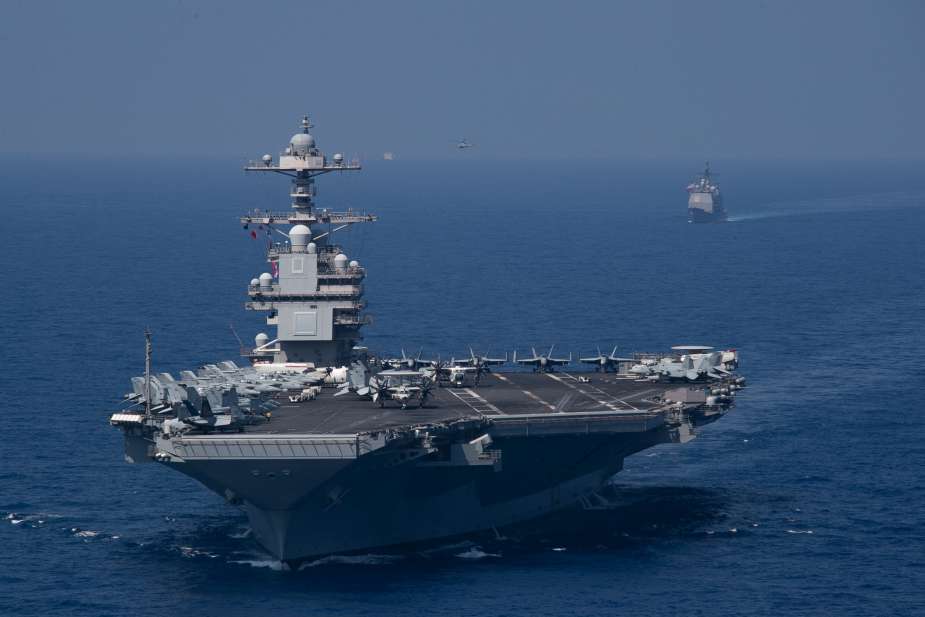Breaking news
US Navy's aircraft carrier USS Gerald R. Ford: an overview.
The Gerald R. Ford-class is the United States Navy's newest generation of nuclear-powered aircraft carriers. Let's explore it together.
Follow Navy Recognition on Google News at this link
 Gerald R. Ford-class aircraft carrier USS Gerald R. Ford. (Picture source: Dvids)
Gerald R. Ford-class aircraft carrier USS Gerald R. Ford. (Picture source: Dvids)
With a displacement around 100,000 long tons at full load, this class is set to gradually replace the existing fleet. The lead ship, Gerald R. Ford (CVN-78), was commissioned in 2017, and the next in line, John F. Kennedy (CVN-79), is scheduled for service entry in 2025.
Spanning a length of approximately 1,092 to 1,106 feet and with a beam of 134 feet at the waterline that expands to 256 feet on the flight deck, the Gerald R. Ford-class incorporates several technological updates.
One of these is the Electromagnetic Aircraft Launch System (EMALS), which is an alternative to traditional steam catapults. Additionally, the Advanced Arresting Gear has been integrated to assist in the aircraft landing process on the carrier deck.
A feature of the Ford-class design is its focus on automation, which aims to optimize operations and potentially adjust the crew size. This shift is consistent with trends in naval vessel design that lean towards increased automation for operational efficiency.
The radar systems of the Ford-class include the AN/SPY-3 X Band multifunction radar and the AN/SPY-4 S Band volume search radar, known collectively as the Dual Band Radar (DBR).
There's an anticipated update for the John F. Kennedy (CVN-79) with the potential integration of the AN/SPY-6 to enhance the radar's volume search capabilities.
The carriers are powered by two Bechtel A1B nuclear reactors. These reactors are designed to meet the electrical demands of the onboard technologies and ensure the carriers can maintain speeds in excess of 30 knots. The design also allows for an operational range that spans approximately 25 years before a mid-life refuel is needed.
The Ford-class carriers have been designed with features to reduce their radar cross-section. Additionally, they have the capacity to house over 75 aircraft. The flight deck's design has been adjusted to facilitate movement of weapons and aircraft.























